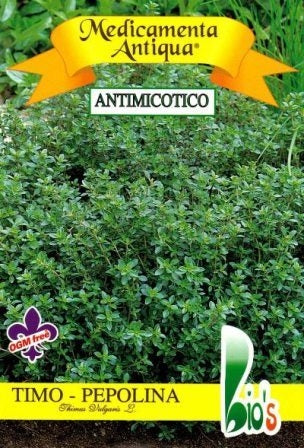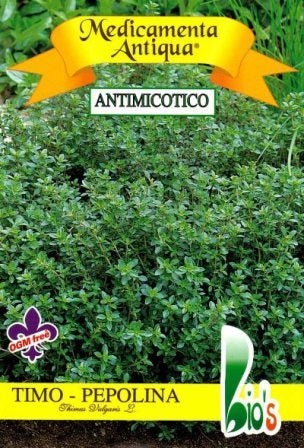Scientific name: Thymus
Family: Lamiaceae
Brief history and botanical notes on the plant
Thyme is native to the western Mediterranean regions, it is a plant that grows spontaneously especially on arid and stony soils both in the mountains and near the sea. In Italy it is present across almost the entire territory.
The name comes from Greek and means strength, courage; it is said that the balsamic scent of this plant awakens these virtues.
It is a perennial plant, about 40/50 cm tall. The trunk is woody and very branched which forms compact bushes. The leaves are grey-green, small, elongated, covered with thick hair and strongly aromatic. The flowers are white or pink and grow in spike inflorescences.
Main species
Thymus vulgaris: it is a plant used mainly for therapeutic purposes.
Thymus serpillum: it is also known as citron thyme. The peculiarity is that its characteristics change depending on the climatic conditions.
Thymus herba barona: it is very widespread in its spontaneous state and its aroma is very reminiscent of cumin.
Cultivation technique
It is a plant that loves the sun and adapts easily to all types of soil. In pots, sow on stony soil and when the seedlings are sufficiently developed, transplant them into sunny areas. If grown in the field, weeds are not a problem, because thanks to its vegetative luxuriance it manages to prevail.
Thyme does not require large quantities of water, tolerates drought but cannot tolerate water stagnation in any way.
Flowering and pruning
It blooms from spring and throughout the summer.
As far as pruning is concerned, it is only a matter of eliminating the dry or damaged parts.
Collection and conservation
The leaves and flowering branches are collected before flowering. Two harvests can be made; one in June and the other in September, so as to let the plant regrow. Both the leaves and the flowers are dried in shady, ventilated and dry places.
It is best not to overdo it in the first year of the plant's life so as not to weaken it.
Usage
Thyme is used above all in cooking to flavor many foods: meat, soups, vegetables, sauces, omelettes and fish. Added to preserved meats it slows down the formation of mold. It is also used to produce liqueurs, wines and aromatic salts.
The therapeutic properties are: digestive, purifying and balsamic. Herbal teas and syrups tone the body and stimulate digestion.




